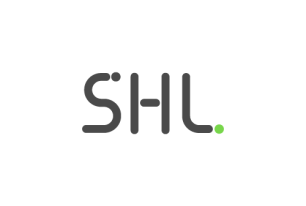Finding Professional Talent: Stepping Out from the Skills Revolution
The professional landscape is evolving faster than ever. As we step into a new year, businesses are grappling with a double challenge: keeping up with technological leaps while facing critical talent shortages. Our latest research reveals a seismic shift in the skills needed for success—what was essential two years ago is now barely scratching the surface.
Share
The Talent Crunch
The skillset once dominated by technical know-how and industry-specific expertise has been overtaken by the rise of soft power. Adaptability, emotional intelligence, and creativity are no longer “nice-to-have” traits—they're essential. Professionals must blend technical expertise with the ability to pivot quickly, innovate, and work seamlessly within diverse, often virtual, teams.
This shift isn’t just about technology; it reflects a fundamental change in workplace dynamics. Skills-based organizations and the rise of remote work, digital collaboration, and cross-border teams, demand a fresh approach to communication and teamwork.
The New Rules of the Skills Game
Organizations know they need this new mix of skills, but the talent pool is running dry, with a recent survey stating that a staggering 80% of HR teams are finding it difficult to source professionals. Roles in fast-growing industries like tech, healthcare, and renewables are particularly hard to fill, with demand outpacing supply. The challenge? Finding and hiring professionals who balance technical proficiency with the critical soft skills needed to thrive in today’s hybrid workplaces.
SHL researched skills for professionals with a comprehensive job analysis and using our extensive database of skills data mapped these to our skills framework, to identify how skills have changed since 2022 to today.
The major shift has been between skills that promote individual effectiveness to skills that lead to success in teamwork and collaboration. Skills such as ‘puts team first’, ‘attends to multiple tasks’ and ‘strives to achieve’ have come to the fore. In contrast, skills such as ‘uses time efficiently’ and ‘works to high quality standards’ have lessened in importance. This shows another key shift, which is moving from a workplace where thoroughness was more revered to a workplace where there is a need to thrive in a fast-paced, action-oriented environment.
Interestingly the one skill that has remained important over time is ‘copes with uncertainty’ , showing how since the global pandemic, the workplace has remained dynamic and liable to change at a moment’s notice.
Winning Strategies to Bridge the Gap
How can businesses stay ahead of the curve? By rethinking their approach to professional hiring:
- Scientific Assessments: The right assessments can help understand human skills such as adaptability, collaboration, and emotional intelligence in your hiring process.
- Skill Measurement: Understand the ways skills are measured and how self-reported data, inferred data and assessed data differ will help ensure decisions are fair, accurate, and minimize bias.
- Upskilling and Reskilling: Investment in reskilling has numerous benefits for both employers and employees, while fostering a culture of continuous improvement and innovation.
- Focus on Potential: Focus on potential, transferable skills, and a growth mindset. With the right skills development programs, this will allow your employees to thrive and secure the future success of the business.
- Leverage Data: Reusable, people data can provide huge competitive advantage, providing talent intelligence to enable data-driven decision-making throughout the employee lifecycle.
The Path Forward
Success in 2025 and beyond will depend on how well organizations adapt and build an intelligent skills strategy to move forward. By embracing fresh talent strategies and investing in both technical and human-centric skills, businesses can thrive amid uncertainty.
Watch our recent webinar to learn more about how the skills landscape has transformed, insights into the availability of these crucial skills in the market today, and how to adapt your talent strategies to close the gap between the skills needed and those available.









